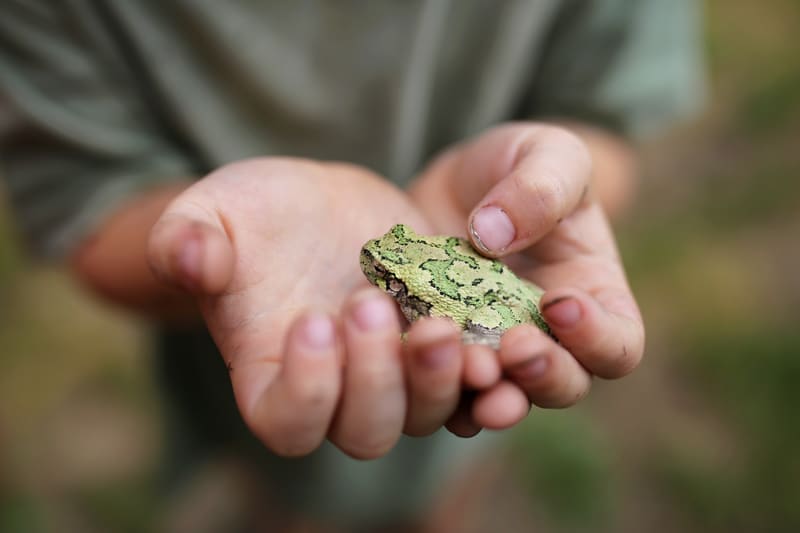Since 1970, April 22nd has been a day to come together and celebrate protecting this blue and green spaceship that we call home. From learning about the incredible wildlife we share our planet with, to volunteering to clean up parks and waterways, there are so many ways to celebrate Earth Day and allow it to enrich our lives the other 364 days a year. Whether you’re already living in an eco-friendly home, or you’re just starting to research non-toxic options, Earth Day is the perfect time to assess the products we’re using for their environmental impact. We’re hoping you’re game to take our Earth Day Challenge by making a clean break from 3 types of household chemicals that are hardest on our planet.
Top 3 Places to Look for Toxins In Your Eco-Friendly Home
The toxic chemicals in our homes are sadly brimming with ingredients that run the gamut from acutely toxic to irritating and allergenic. But they also can have dire consequences on our environment. Here are some of the areas you can check for hidden toxins in your pursuit of an eco-friendly home.
Fabric Treatments
Fabric treatments abound on your carpets, furniture and clothing! These treatments, like stain repellents that wick moisture away use the same technology as Teflon cookware: Perfluorinated Chemicals (PFCs) and Perfluorooctanoic Acids (PFOAs). PFCs and PFOAs don’t break down easily, so they persist in our environment interminably, leaching into food and water supplies and threatening the health of humans and animals with links to cancer, immunotoxicity and organ damage.
That said – don’t freak out! You can build an eco-friendly home over time, by replacing carpets and upholstered furniture with untreated, natural fabrics and textiles like organic cotton, wool and seagrass. For more information, check out the Environmental Working Group’s Healthy Home Guide‘s information on carpets.
Harsh Scrubbing Chemicals
Hard-to-clean zones in the home are especially vulnerable to becoming the site of hazardous chemicals, because we want them to be clean and disinfected. Two places to ensure you’re using safe ingredients: the bathroom and the kitchen. To help you eliminate toxic products from your eco-friendly home, scan your products for some of these harsh toxins and review resources the Environmental Working Group for products that rate highly to replace them with. Two of the nastiest baddies:
Ammonium Hydroxide in disinfecting sprays as well as glass and floor cleaners made by manufacturers like Lysol, Resolve, Pledge and Windex. Linked to asthma and respiratory concerns as well as skin irritation and allergies, this ingredient is an acute aquatic toxin, meaning it’s extremely toxic to aquatic life.
1,3-DICHLORO-5-ETHYL-5-METHYLHYDANTOIN is another no-go for our oceans and water supplies. This ingredient is found in potent cleaners like oven cleaners, drain and clog removers, hard water stain removers and toilet cleaners.
Sodium Hypochlorite is frequently used as a bleaching or disinfecting agent in stove, toilet and oven cleaners, among others. It’s an acute aquatic toxin and runs the gamut of human health concerns from allergies, skin burns and irritation to reproductive toxicity and cancer.
Liquid Detergents & Soaps
This is a tough one! Liquid detergents are particularly prone to nasty stuff. Take a look for common preservatives that are associated with environmental (and health!) risks. One you might see frequently (even in purportedly eco-friendly home cleaning products) is Methylisothiazolinone (MIT) which is very toxic to aquatic life and found in all kinds of liquid soaps and detergents, by brands as “natural” as Mrs. Meyer’s Clean Day.
Avoiding fabric brighteners is also a good idea for planet earth, as they don’t biodegrade and end up in our ecosystems. They are found in laundry detergents like All Free & Clear, Babyganics and even Dreft Newborn! This post has a great rundown of why you want to kick these guys to the curb, and some of the synonyms to scan your labels for like: Optical Brightening Agents (OBAs), Optical Whiteners, Fluorescent Brightening Agents, Organic Fluorescent Dyes
Surfactants are a class of chemical that make water “wetter” by reducing surface tension, and are often found in liquid soaps and detergents. They’re toxic to aquatic life and can be avoided by scanning labels for terms like alcohol ethoxylates and Nonoxynol-12.
We love our Planet Earth!
Do the earth a favor this year and get rid of cleaning products that contain harmful chemicals and toxins. Use resources like the Environmental Working Group’s Guide to Healthy Cleaning for high-scoring products. And, of course, check out our safe, effective cleaning system Force of Nature. We harnessed the power of simple ingredients – just salt, water and vinegar – to create a powerful cleaner that’s tough on messes and easy on the environment.




